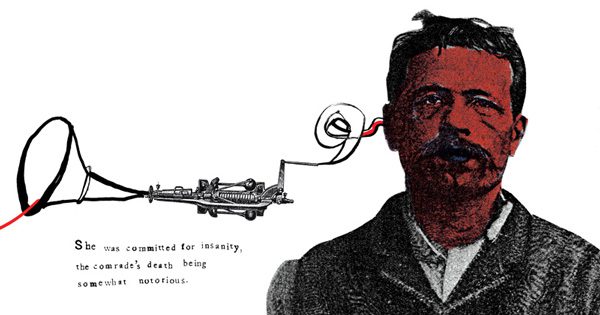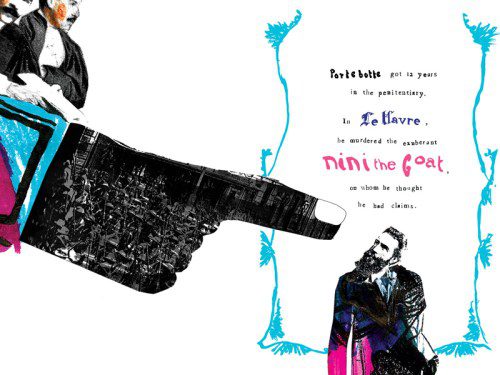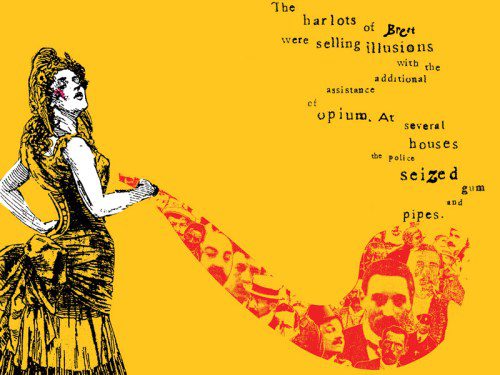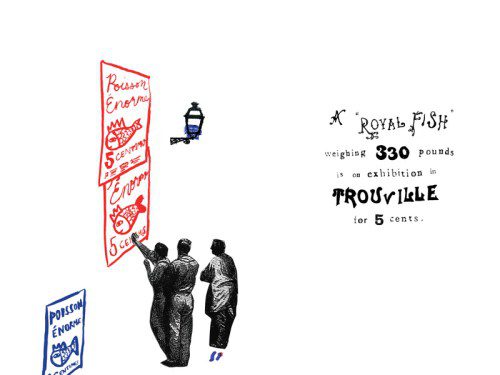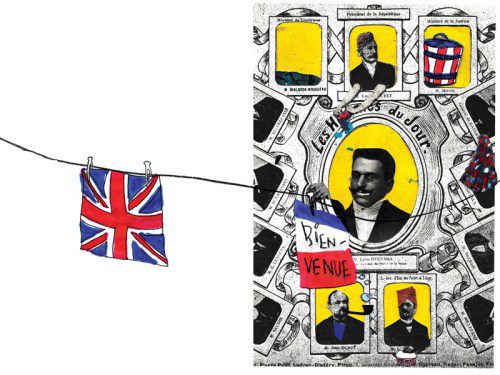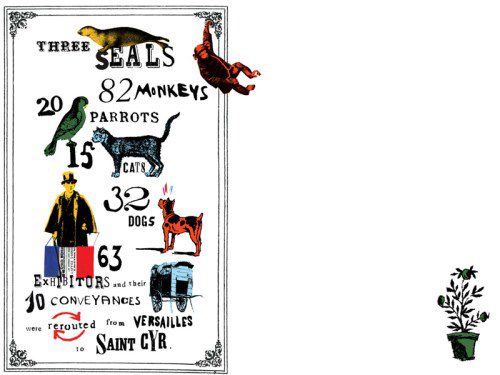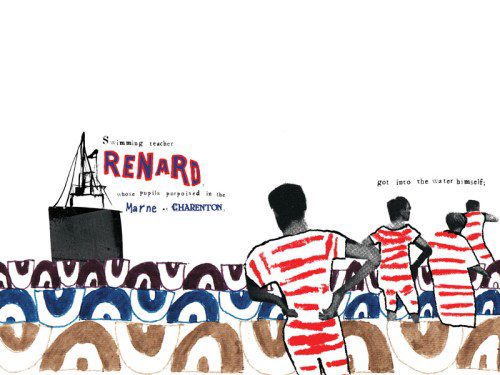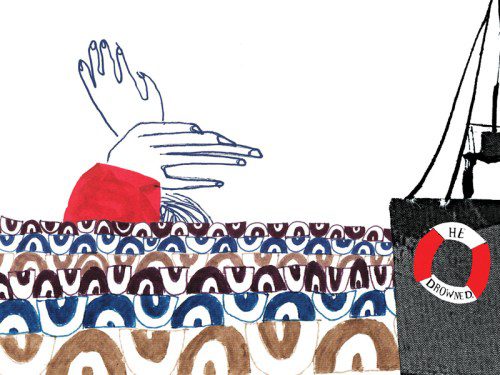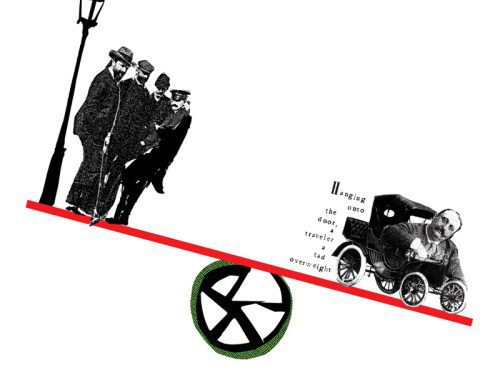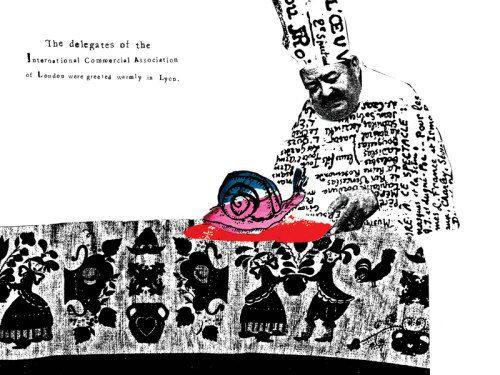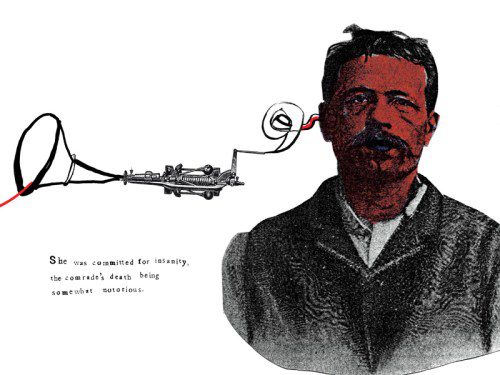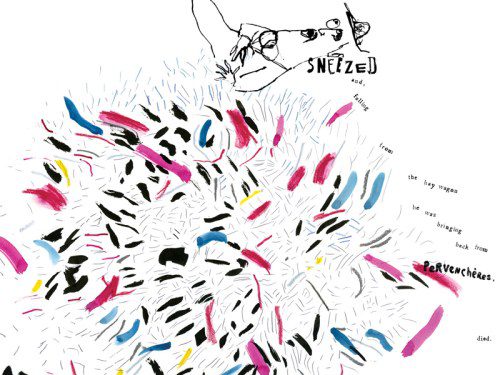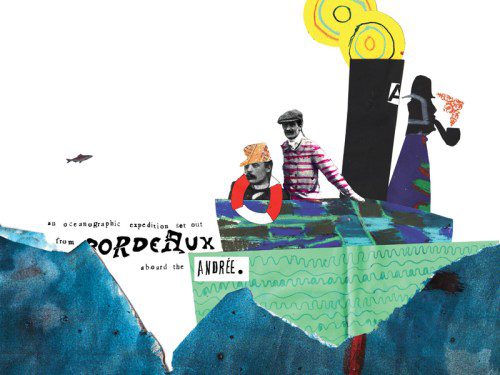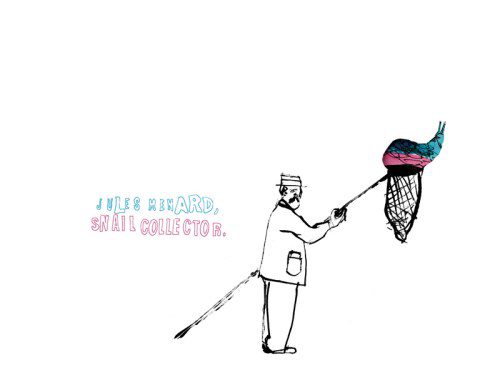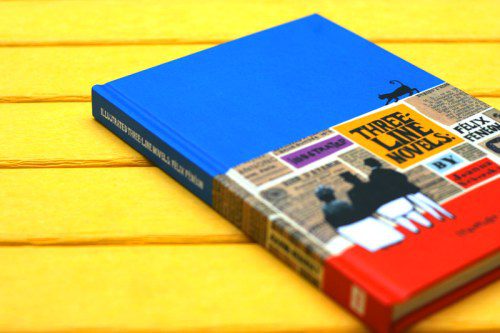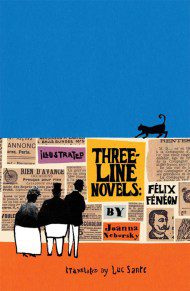 We’ve previously shown that the literati of yore had their own Facebook, and it turns out they had their Twitter, too. Artist, anarchist and literary entrepreneur Félix Fénéon was the one-man Twitter of early 20th-century France. Between May and November of 1906, he wrote 1,220 succinct and near-surrealist three-line reports in the Paris newspaper Le Matin, serving to inform of everything from notable deaths to petty theft to naval expedition disasters. In Illustrated Three-Line Novels: Félix Fénéon (public library), artist Joanna Neborsky captures the best of these enigmatic vignettes in stunning illustrations and collages, inspired by Luc Sante’s English translation of Fénéon’s gems for the New York Review of Books. Sometimes profound, often perplexing, and always prepossessing, these visual snapshots of historical micro-narratives offer a bizarre and beautiful glimpse of a long-gone French era and a man of rare creative genius.
We’ve previously shown that the literati of yore had their own Facebook, and it turns out they had their Twitter, too. Artist, anarchist and literary entrepreneur Félix Fénéon was the one-man Twitter of early 20th-century France. Between May and November of 1906, he wrote 1,220 succinct and near-surrealist three-line reports in the Paris newspaper Le Matin, serving to inform of everything from notable deaths to petty theft to naval expedition disasters. In Illustrated Three-Line Novels: Félix Fénéon (public library), artist Joanna Neborsky captures the best of these enigmatic vignettes in stunning illustrations and collages, inspired by Luc Sante’s English translation of Fénéon’s gems for the New York Review of Books. Sometimes profound, often perplexing, and always prepossessing, these visual snapshots of historical micro-narratives offer a bizarre and beautiful glimpse of a long-gone French era and a man of rare creative genius.
Félix Fénéon was a dandy, a literary bricoleur, and a terrorist, maybe. Biographers dispute his guilt in the 1894 bombing of a restaurant in Paris. As the journalist himself might later have written, ‘A flowerpot left on a windowsill exploded in the Rue de Conde. In the Restaurant Foyot, appetites and the eye of Laurent Tailhad, 40, were lost.’ Fénéon, then a clerk in the government’s War Office, was arrested and tried int he sensational Trial of the Thirty, a piece of political theater aimed at exposing the anarchist underground. After he was acquitted (evidence was flimsy, the prosecution, inept), two policemen followed Fénéon for the next two decades. But how do you shadow a shadow? In life and work, the wraithlike Fénéon — his lean face darkened by a top hat and limned by a goatee that friends said gave him the look of Uncle Sam, or Mephistopheles — preferred to disappear. His love was art, and his subject, the genius of others.”
Illustrated Three-Line Novels: Félix Fénéon comes from independent publisher Mark Batty, makers of wondrous books exploring such fascinations as how sounds became letters, why typography might be the key to cross-cultural understanding, and what the ecology of Antarctica has to do with remix culture.


